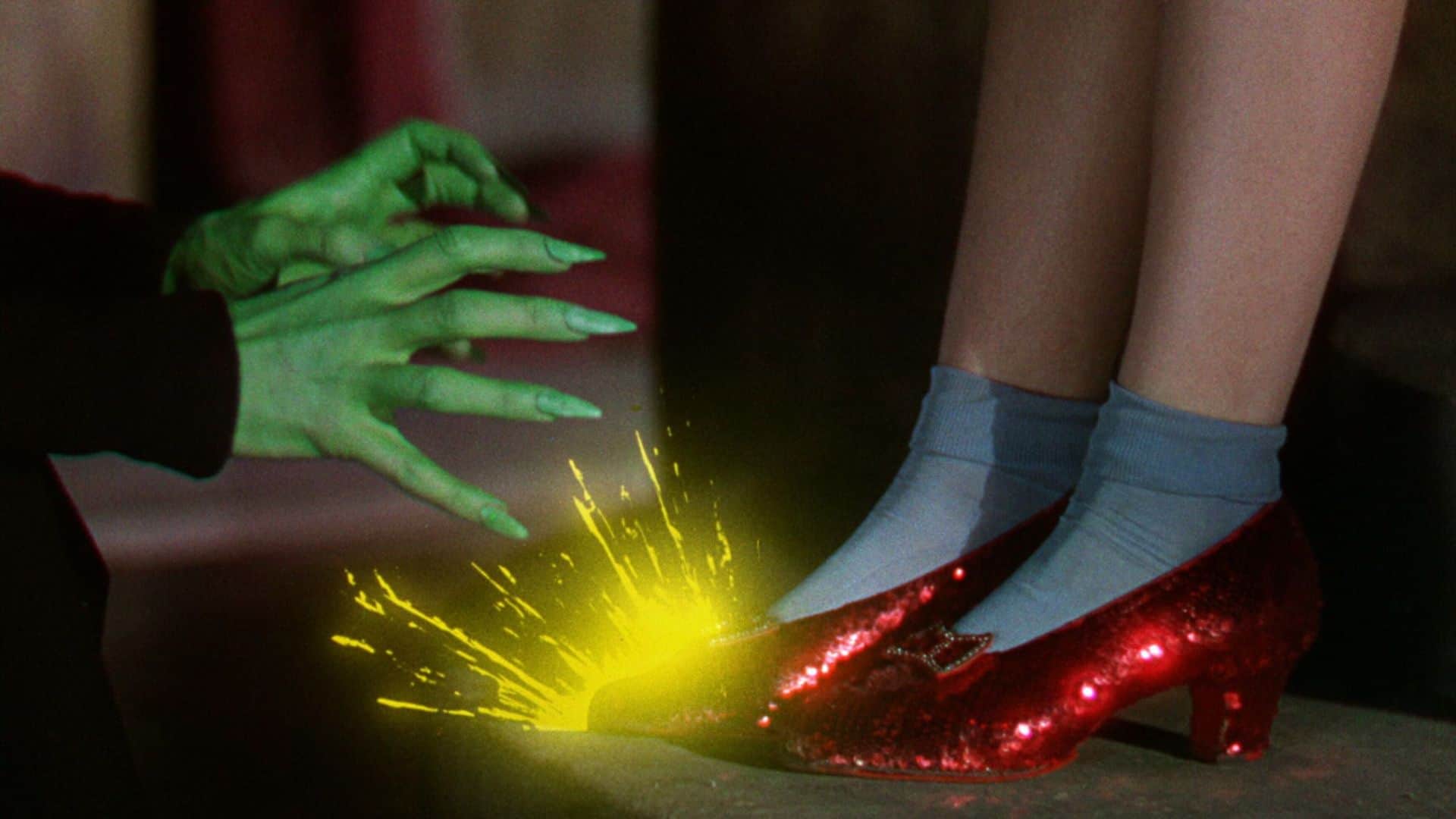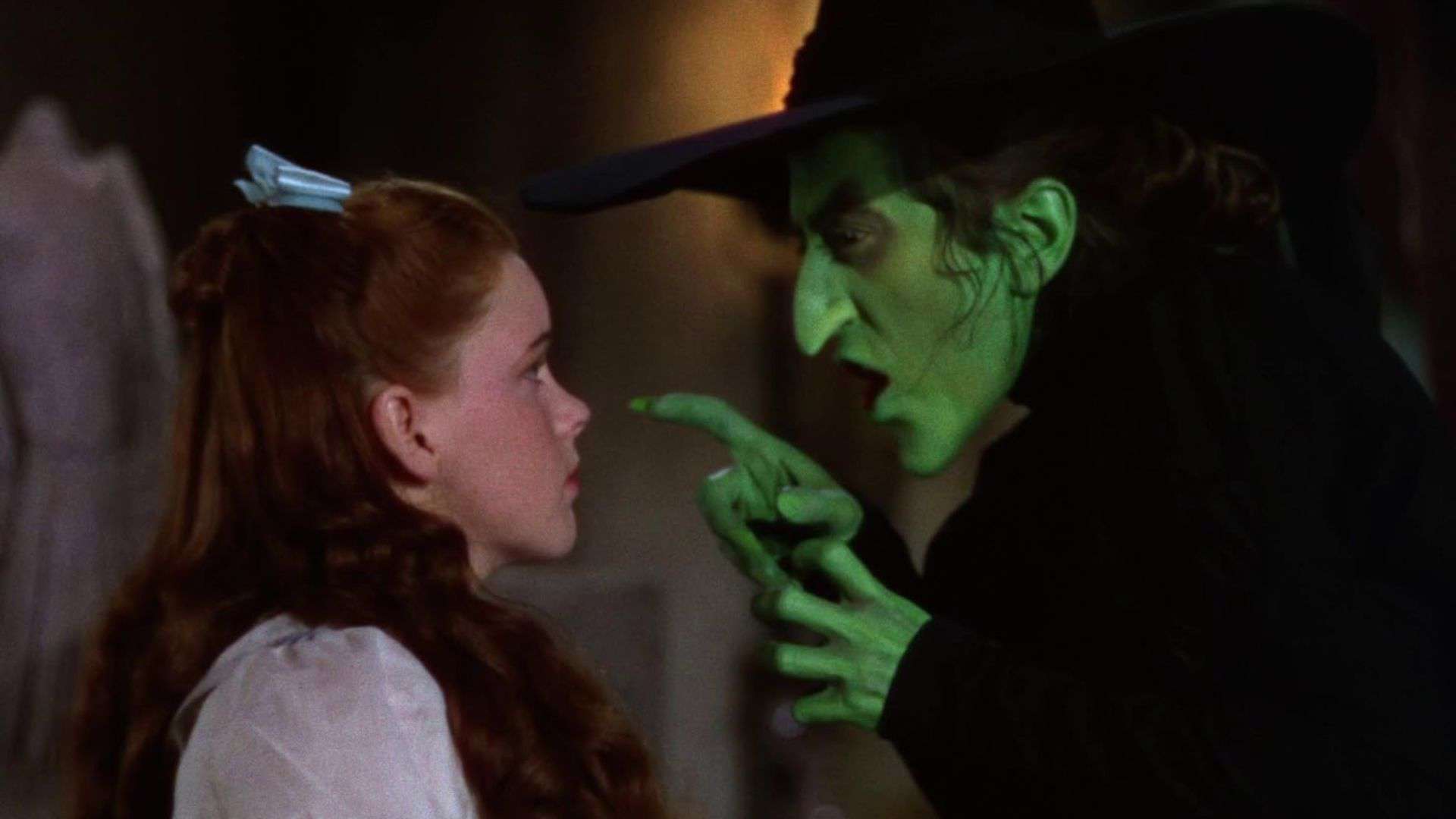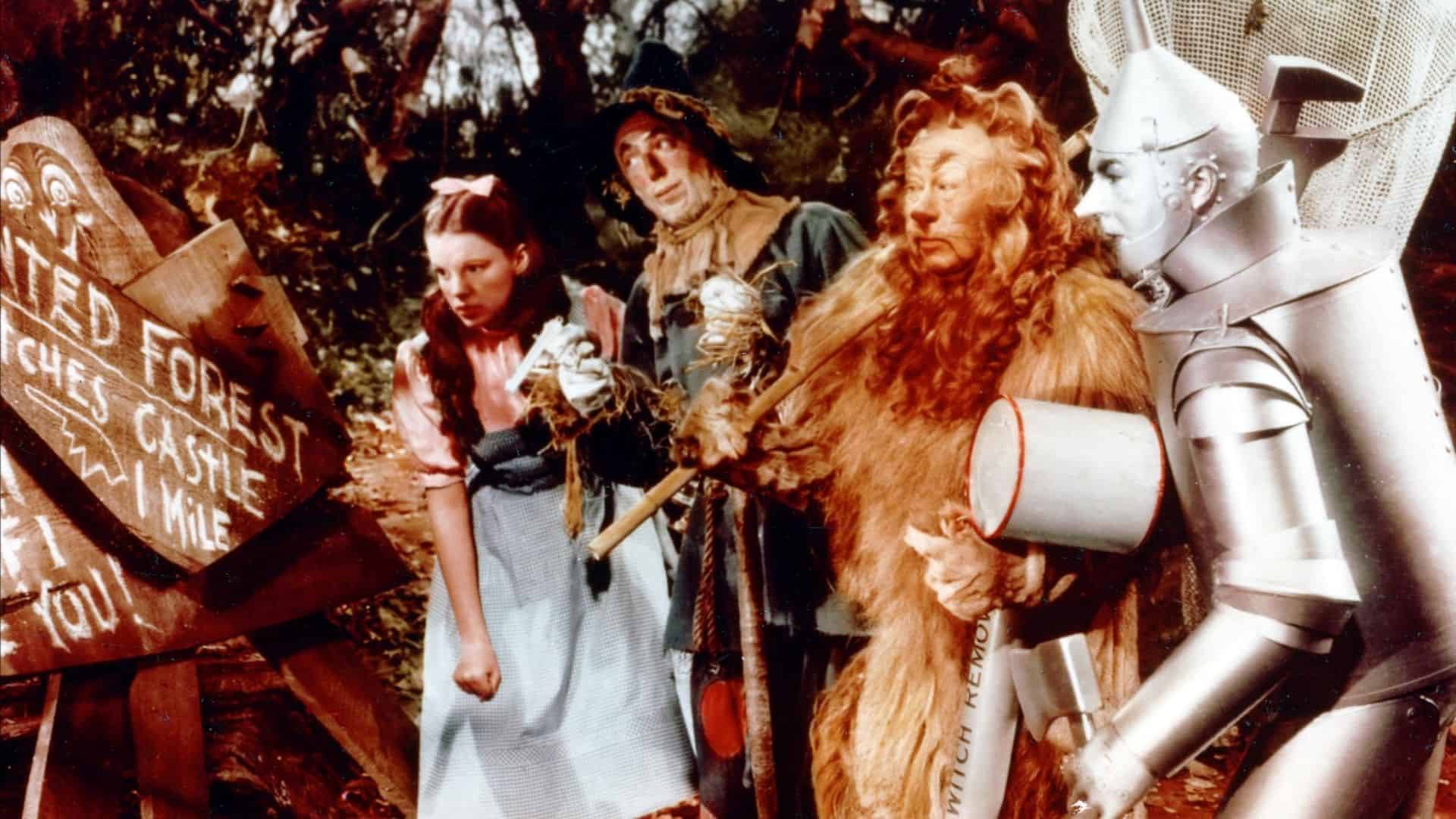
When we think of “The Wizard of Oz,” we think of iconic lines, memorable characters, and unforgettable musical numbers that have captured the hearts of audiences for 85 years. Many of us may remember our first viewing experience as popping in a dusty VHS tape at our grandparents’ house or catching the movie on cable TV, but the significance of the film was probably lost on us — especially if we were watching it as children.
“The Wizard of Oz” remains one of the most influential films in history. The film’s final product is notable, but the filming is notorious for its experimental (and downright unethical) practices. Sure, there was madness behind the magic and I cringe at the practices by today’s standards, but I can’t deny the results or the fact that the movie changed cinema forever.
Author’s note: “The Wizard of Oz” will appear on the big screen for one weekend only, Jan. 28 to 31, to celebrate its 85th anniversary.
The Cinematic Impact of ‘The Wizard of Oz’

The film was released by Metro-Goldwyn-Mayer (MGM) on Aug. 25, 1939, just days before the start of World War II. Needless to say, times were bleak and the general public was in need of escape. There were plenty of incredible films that graced the silver screen that year (including “Gone With the Wind,” “Only Angels Have Wings,” and “Stagecoach”), but none created a world as whimsical, fantastical, or colorful as “The Wizard of Oz.”
Based on L. Frank Baum’s children’s book published in 1900, “The Wizard of Oz” was a film that was perfect for any age. Although it took over a year to turn a profit, the film was a hit and it found a second wave of success in the 1950s. To no one’s surprise, the movie has become a household name and, for many, a family tradition.
There’s proof of the film’s influence: In 2018, researchers at the University of Turin named “The Wizard of Oz” the most influential film ever after a study of over 47,000 movies showed that it had the most spin-offs and references made to it in other movies.
Although the story, setting, and performances were a huge part of the film’s on-screen success, “The Wizard of Oz” created its largest impression behind the scenes — for better or worse.
Pay No Attention to That Mayhem Behind the Curtain
“The Wizard of Oz” brought about revolutionary changes in filmmaking, but it wasn’t without its challenges and sacrifices. Behind-the-scenes stories revealed by cast and crew members showed a darker side to the magic that unfolded on screen.
Let’s just say not everything was better over the rainbow.
- Viewers can see an actor hanging in the background of the scene where Dorothy, the Scarecrow, and the Tin Man set off for Emerald City.
- “The Wizard of Oz” had six directors.
- One of the directors slapped Judy Garland across the face for giggling during a comedic scene.
Innovative Filming

One of the key factors contributing to the film’s groundbreaking status was its innovative use of cinematography and special-effects techniques. “The Wizard of Oz” embraced the three-strip Technicolor process.
The Technicolor process was a revolutionary method that involved recording scenes through colored filters on three separate strips of film. The studio would need to rent special cameras from the company along with two experts for operation. After filming, the strips were processed separately and used to “print” colors onto each of the finished film prints that would be sent to theaters.
The intricate process — accompanied by hand-painted frames to transition the sepia-toned Kansas scenes to the brilliantly colorful Land of Oz — marked a significant departure from traditional black-and-white cinematography. “The Wizard of Oz” was not the first color film, but its use of Technicolor set it apart from earlier attempts. The film’s success paved the way for the widespread adoption of color in filmmaking, ultimately influencing cinema’s visual language.
“The Wizard of Oz” is credited for its use of Technicolor, but it was not the first color film. Many short films experimented with color. One of the most notable was “A Visit to the Seaside,” which is credited as the first movie filmed in natural color via the Kinemacolor process. The process used alternating red and green filters, which resulted in some color, but with a pretty limited spectrum.
The first full-length feature film made with the Kinemacolor technique was the 50-minute “The World, the Flesh, and the Devil,” but, like many movies from this time, it’s a lost film. Only a general plot synopsis — a woman devises a plan to switch a poor family’s and a wealthy family’s babies — survives.
Not only did the Technicolor technique produce more brilliant colors, but the movie’s reign at the box office also created more demand for color films. The release of “Gone With the Wind” a few months later further cemented color’s popularity.
Although it was a huge part of the movie’s success, the use of Technicolor had its unique challenges, one of which was the need for incredibly bright lighting during filming. A large set and several arc lights led to soaring, triple-digit temperatures on the soundstage, adding to the harsh working conditions the actors endured.
Costumes and Makeup

Because the film could capture color, the makeup team had to get creative with how they could achieve bold yet realistic fantasy looks that hadn’t been done before in a cinematic setting. The three most notorious makeup mishaps involved the Tin Man, the Wicked Witch of the West, and the Scarecrow.
The actor originally cast as the Tin Man, Buddy Ebsen, was hospitalized and put in an iron lung shortly after filming started, thanks to the powdered aluminum that was used to achieve his metallic appearance. The aluminum powder coated and poisoned Ebsen’s lungs, and although he survived, he was unable to return to the role.
The makeup still consisted of aluminum when Jack Haley filled in as the Tin Man, but the team created a paste that seemed to work just fine — although it led to an eye infection that required surgery to save Haley’s sight.
The prosthetics used on Ray Bolger for the Scarecrow were made to look like burlap. They were revolutionary and innovative for the time, but the glue and the application and removal techniques weren’t quite as safe or careful as they are today. Bolger’s face was marked up like the Scarecrow for about a year after filming wrapped.
The makeup team also infamously used copper oxide to create the Wicked Witch of the West’s iconic green skin. The look was as successful as it was dangerous. The team had to be incredibly vigilant in removing it, since prolonged exposure (or ingestion) could be fatal.
“The Wizard of Oz” characters had looks and costumes that were nothing short of memorable, but they were incredibly uncomfortable for the actors.
In addition to putting her on a horrific diet of chicken broth, black coffee, cigarettes, and a cocktail of pills, MGM wanted Judy Garland to look as young and small as possible for her role as Dorothy. The costume department had her wear corsets and chest bindings to give her a more prepubescent body shape.
Along with metal prosthetics and aluminum makeup, part of Haley’s Tin Man costume was metal, making him unable to sit while in costume. To find relief between takes, he would lean against a special board designed for actresses wearing large, restrictive ball gowns.
The most notorious costume, however, is the Cowardly Lion’s, which was a real, 90-pound lion hide. It was very hot, very heavy, and very smelly — and the heat from the blazing arc lights didn’t help poor Bert Lahr feel any better during those grueling days on set.
Special Effects

Aside from its brilliant Technicolor filming, “The Wizard of Oz” dazzled audiences with its special effects. The special-effects team used a multitude of techniques, including miniatures, rear projection, and matte paintings, to bring Oz to life.
The vibrant and fanciful Land of Oz is, without a doubt, a testament to the creativity and ingenuity of the production team, but its experimentation often had unfavorable and dangerous consequences for the cast.
In addition to the asbestos snow that rained onto the actors during the poppy field scene and the flying monkeys that made crash landings, the most notable on-screen disasters had to do with the film’s pyrotechnics. In the scene in which the Wicked Witch of the West disappears from Munchkin Land, Margaret Hamilton was set ablaze by a pyrotechnic accident, leaving her with second-degree burns on her face and third-degree burns on her hand.
If that wasn’t painful enough, the makeup team went to work scrubbing the toxic green paint off of her skin immediately after the accident — before she was taken to the hospital. Hamilton’s hand hadn’t healed enough for makeup application when she returned to set, so she wore green gloves.
After the accident, Hamilton understandably refused to work with fire, so the “Surrender Dorothy” sky-writing scene was performed by her stunt double, Betty Danko. While rehearsing on the suspended, smoking pipe that was made to look like the witch’s broom, another pyrotechnic accident occurred. The pipe exploded and sent Danko across the stage, and she was in the hospital for 11 days for a leg injury that left her scarred for life.
We’re Not in Kansas Anymore
As problematic as filming was, it didn’t keep the movie from finding a place in our hearts. I don’t think the shock of all these behind-the-scenes horrors will ever wear off, but I have a greater appreciation for the cast and crew that gave so much of themselves to create the iconic film.
The film paved more than the Yellow Brick Road. It also ushered in a new era of movies. Long gone are the days of black-and-white cinematography and — thankfully — the reckless production practices of 1939. “The Wizard of Oz” is an undeniable pioneer of cinema, even though its success came with plenty of hurdles.
To relive the adventures of Dorothy, Toto, and the rest of the gang, stream “The Wizard of Oz” on Amazon Prime Video, Hulu, or Max.
- Lie: The urban legend that a Munchkin hanged himself on set is just a morbid myth. There’s no evidence or record of it actually happening.
- Truth: The movie had six directors throughout filming: Norman Taurog, Richard Thorpe, George Cukor, Mervyn LeRoy, Victor Fleming, and King Vidor. Fleming is primarily credited for directing, since the first four were quickly replaced, but he left before wrapping to work on the struggling “Gone With the Wind,” leaving Vidor to take it across the finish line.
- Truth: Fleming slapped Garland across the face because she kept laughing during a comedic scene (her studio-enforced diet of coffee, cigarettes, and “pep” pills probably didn’t help). He felt so bad about it that he went around set asking the crew to punch him in the face, but they all refused. He then asked Garland to hit him. She said no, but that she’d kiss him on the nose — further proof that Garland was much too pure for this world.
